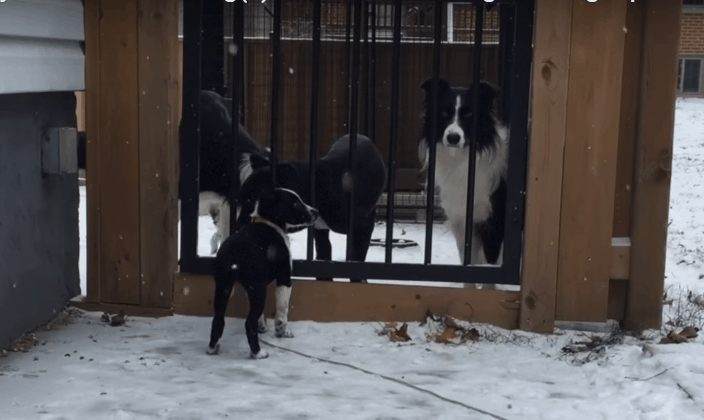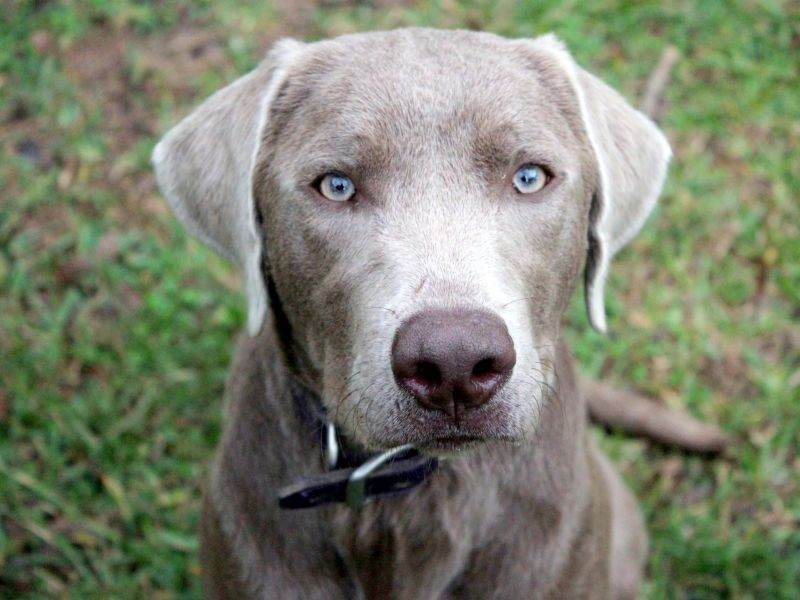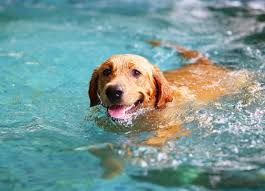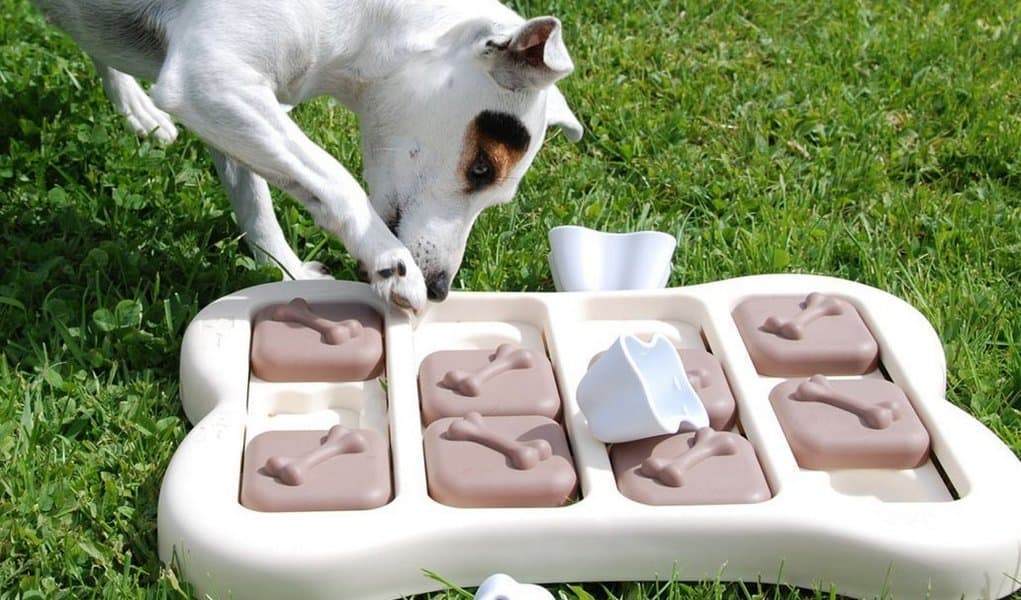For introducing the puppy to other dogs, you should keep a check on their body language during the first meeting. Also, the techniques like meeting through the fence, the use of sniffing and boundaries are helpful in the introduction of dogs to other dogs and hence make them more social.
Are you adding a new furry family member to your family? Introducing a new puppy to your other dogs can be a bit of a feat, but well worth it in the long run.
It doesn’t matter the reason you’ve chosen to get a new puppy, what matters is how to do it without making your other dog feel like there’s an intruder on their territory.
Some dogs will take to the new pup easily, but others, not so much. In the following information, we’ll help you with the new pup’s homecoming and the transition of adding him or her to your furry family mix.
Today I want to talk to you a little bit about how to introduce old dogs to puppy and at the same time build a really solid bond with your new puppy.
It is important that when the puppy comes to your home for the first time, the puppy becomes friend with you before being friendly with other dogs. But I have people tell me that current dog hates my new puppy or that dog not adjusting to new puppy.
It’s really easy for puppies to learn to love their housemates, and they learn fairly quickly, because they all speak the same language. All of this article is first hand experience so you can trust what I say in this article.
What You Should Expect When Introducing New Puppy to Current Dogs
Over the last several years, we’ve introduced many new puppies to our permanent furry family members. Because my husband and I work as puppy raisers for a service pet organization, we often come across puppies that need to be trained and introduced to other dogs so they can fulfill their service needs when they are ready.
New puppies come to us around 8 weeks old, and for the first time, they are away from their brothers, sisters, and momma’s, in a foreign environment with dogs twice their size. No wonder they can get stressed out easily, that is a scary situation.
With every new arrival, we’ve learned new things about how adult dogs act with the new intruders. In all the years we’ve been doing this, we know three things for certain:
- The new pup is never welcomed immediately.
- All our resident dogs (3 of them), growl, snap and avoid the new puppy.
- Yet, none of them have ever hurt a puppy.
Each of these reactions is pretty normal, and over the years, most have remained the same. Sometimes one of the dogs may welcome the newcomer quickly, but it usually comes down to the same three reactions. Much of the time, body language is helpful when determining what could happen next.
Body Language to Watch For
- Hair standing up on neck or back
- Staring for long periods
- Growling
- Showing teeth/snarling
- Hunching up of the back, raising their haunches
Socializing your New Puppy
1. Select a Neutral Territory for Introduction
Anytime you introduce a new puppy or another animal to the permanent dog residents, it must be on neutral territory. The best is to do this is in the outdoors, a fenced yard or dog pen is ideal, if possible.
You should use someone to help you with the first time introductions, this way each dog can be on a separate leash and not crowding the other’s territory. Each of you should carry a bag of dog treats or food in small amounts.
When you start, keep the dogs away from each other walking parallel, enough so they can see one another, but not be close enough to snap or invade the other’s space.
If you notice them watching each other without negative behavior, reward them with treats for the positivity. It doesn’t hurt to praise them often while they look at each other.
2. Watch Their Body Language
As mentioned above, body language is important for gauging their next moves. Keep an eye out for body language that could be negative such as hair standing up, teeth-baring, growling, etc. Should you notice any of this type of body language, intervene calmly by distracting them with something else.
If their body language seems relaxed, you can bring them closer together. Anytime they show positive attitudes, even when just looking at each other, reward them with a treat and praise.
3. Start With a Meeting Through The Fence
Letting the pup and adult dog meet through a fence is one of the safest ways for first-time introductions.
Also, be sure not to hold the puppy during the meeting, as mentioned before. Fence meetings help limit their interactions to nose sniffing or if they are excited, they can run the length of the fence with each other and have fun.
You will need to keep your reactions neutral because dogs know when their humans are wary or nervous, which can cause tension between the dogs. Fence meetings can also help keep accidents happening.
For example, if the adult dog is over excited, he might accidentally harm the puppy. This is especially important if the size difference between pup and adult is large.
4. Allow Them Sniffing Each Other
During fence meetings they have some sniffing opportunities, but not like they would in an open neutral area on their leashes. If they have shown happy, relaxed behavior with each other while on or off their leashes, it’s okay to allow them to sniff each other, it’s what dogs do.
Attach their leashes, but hold them loosely, allowing them to sniff each other while you supervise. They will inevitably sniff each other in strange, private places so doing this in an open area to help reduce tension.
Such meetings should only be a few minutes long so they don’t get too tired or become annoyed. Be sure to call them away a few times from each other and reward them with a treat and praise.
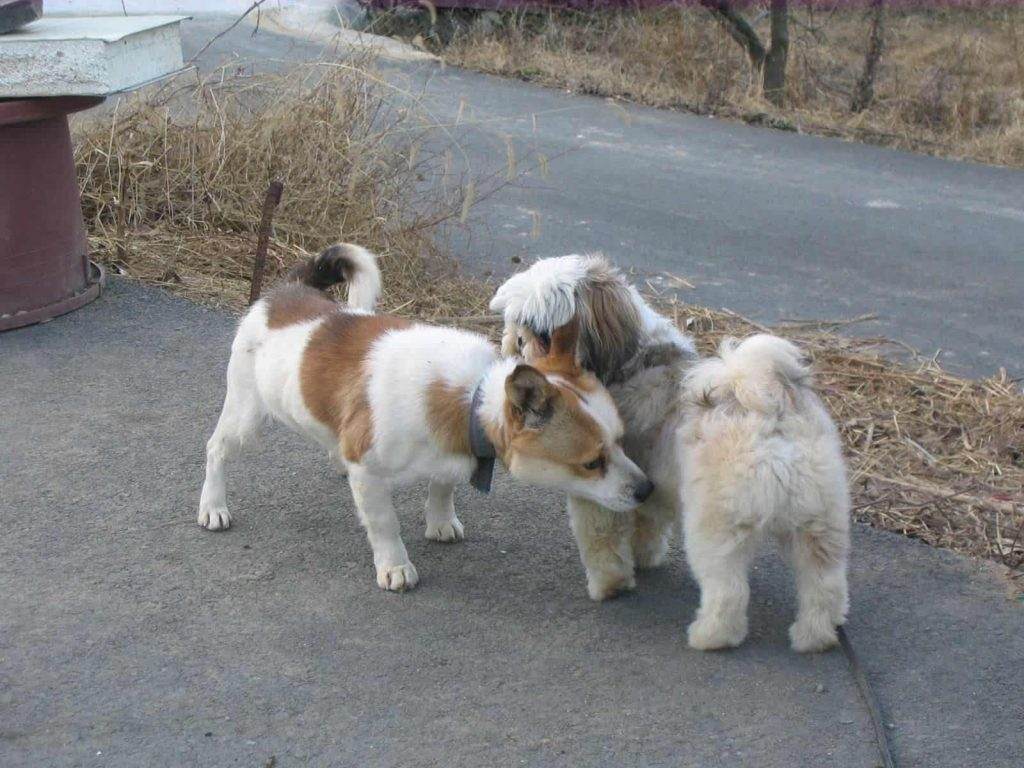
5. Keep an Eye on Friendship Signs
Dogs that want to play will show a few different signs to signal their intentions. The classic play stance consists of their tails up in the air, and their front ends going down. Yawning can also be seen as a non-threatening stance and positive sign they want to play.
Dogs, especially a puppy will often bark, whine, or growl at their playmates, this is common in canine play. Keep an eye out for any body language that is negative.
Another classic sign of positivity is licking the other dog’s face and mouth and rolling onto their back. This is a sign of submission, the puppy, as a show of respect, will normally display this behavior.
6. Dogs Always Set Some Boundaries
More often than not, your older dog will set boundaries for the puppy. This is a normal occurrence with dogs and other pack animals. In the wild, wolves, for example, engage in the pecking order for the rest of the pack and the same holds true for domesticated animals.
There are instances where your older dog will growl at the younger dog as a warning they are becoming annoyed by the puppy.
This can usually be avoided if you intervene and give the puppy something else to do before things get out of control.
7. You Should Yourself Provide Boundaries or Safe Zones
Once the first time introductions are complete, when you are home you will want to keep the puppy and older dog in their separate places most of the day.
It is the safest way to keep the puppy unharmed and your older dog from being stressed out. By doing so, it helps the older dog to get used to the puppy.
Many older dogs may suffer from orthopedic issues like arthritis and mobility trouble. On average, dogs over five aren’t as likely to enjoy the exuberance of a playful puppy.
By creating a safe zone for your adult dog, they can retreat safely when they are not in a playful mood. Youngsters can be tiring to older dogs, and they would rather rest than engage in playful puppy antics.
Another idea for keeping your older dog away from an overexcited puppy with too much energy is to play with the puppy, separate from your older dog to help dissipate their rambunctious behavior.
In other words, by tiring the pup out some before allowing them to play with your older dog, will calm the puppy down and give your older dog a chance to play a little if they choose to.
Boundaries are an important factor in socializing multiple dogs. Especially for those dogs that aren’t used to being around puppies any longer, or have never been around a puppy before. Such boundaries will help older dogs to be less stressed out making them happier to engage with the youngster in moderation.
There are a variety of boundary options you can choose from including baby gates, x pens, or a room to help your older dog to relax and not worry about having to play with the puppy.
When choosing to use baby gates it’s best to erect them a few days before you know the puppy will be coming home with you. Change can also stress out older dogs, but by putting up the gates beforehand, they can get used to such changes.
Outside of the boundary zones, if they show positive attitudes toward each other, letting them play together outdoors for a short period, under supervision, can help them to tolerate each other better and become furry pals.
Remember, a fenced yard or enclosed pen is the safest way to let them frolic around. After they’ve had shown comfort with each other, they should be allowed to spend some time indoors with each other in moderation and with some supervision. keep an eye out for small spaces or tighter locations that may cause tension or fights to break out between them.
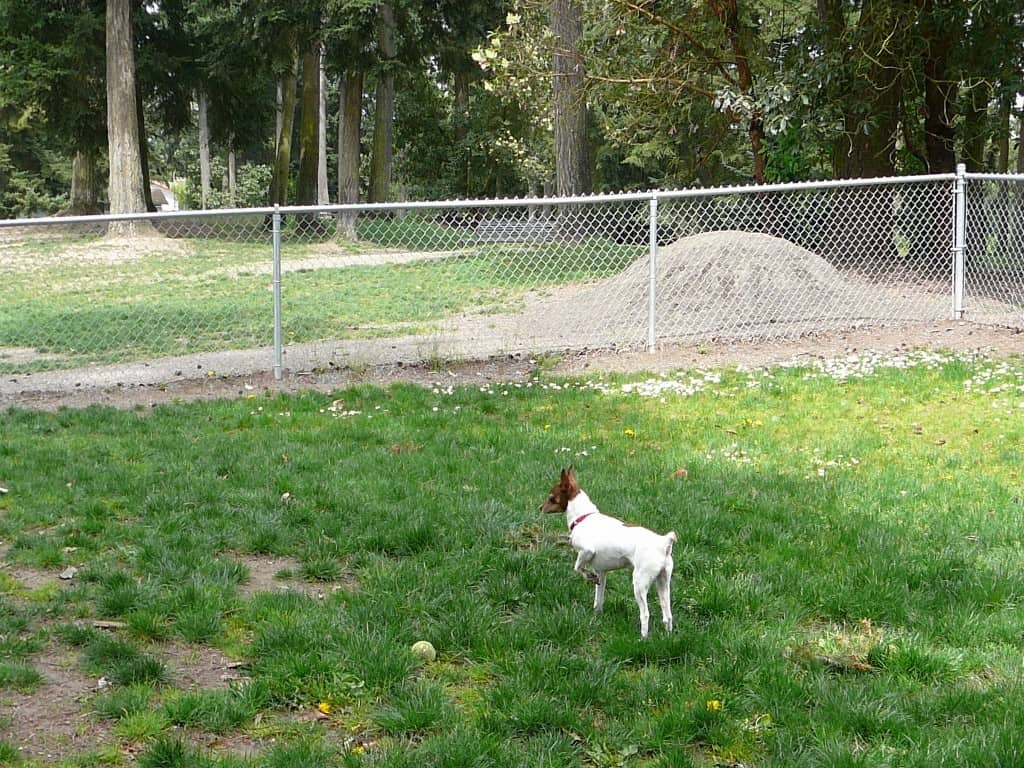
8. Keep Isolation From Other Dogs First Couple of Days
One of the first techniques that I want to share and I often use is about the isolation of the puppy. For the first couple of days when the puppy is new in the home, I keep her isolated and separate from other dogs in the house.
So if I have her out and was training her or playing with her (on Animal Planet Website), all of my other dogs would be away.
The other dogs would be either in a crate or in another room or maybe downstairs. I want other dogs away from the action so that she doesn’t have any distractions.
Other dogs cause her to not be attentive to me. Once we’ve spent a few
days building a bond and working together, then I might start to introduce my elder dogs, just one at a time.
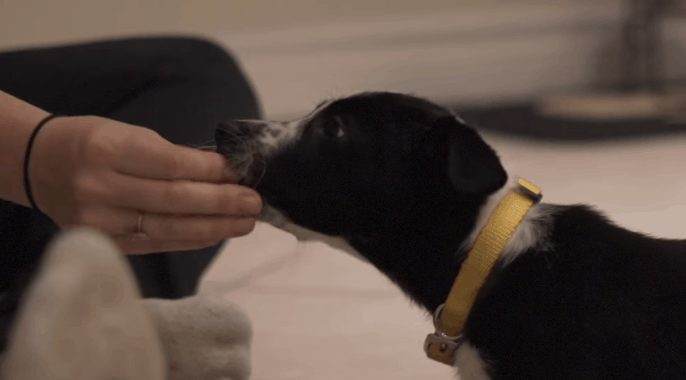
9. Introduce to The Eldest Dog First
I try to select the elder dog very strategically and choose the one who isn’t going to be that interested in her. This is because I want her to listen to me first and then have her want to go play with the selected elder dog.
I have some dogs that would love to play with a puppy, and I have other dogs who would care less. The latter ones are usually the elder ones.
So I let elder dogs meet her first. I start off by having her in the crate, and then I would have other dogs lose in the room.
While she’s inside the crate, I ask her to do some basic skills that I had taught her. These skills would be some sits, downs, luring and response to name, etc, all with the other dog just roaming around in the room. If I find that she is more focused on the other dog and not on me, then it is not a big concern.
Teaching the puppy his name is such a big thing and should never be ignored. If you want to know ways to teach name to your dog then read my other article-specific that training.
However, sometimes it can be too much of a distraction for the puppy in her first meeting. At that point, I will remove the elder dog from the room and just continue working with her. Simply because I spend so much time in the first couple of days working with her,
I don’t really have that much trouble getting her focused. Most of the times it would turn out that she is pretty keen on the food, pretty encouraged to pay attention to me.
It is also a good idea to take your puppy outside and let them explore the world, we all living being learn a great deal from our interactions with the outside world. We do have an effective list of things for the proper behavior of your dog in the park.
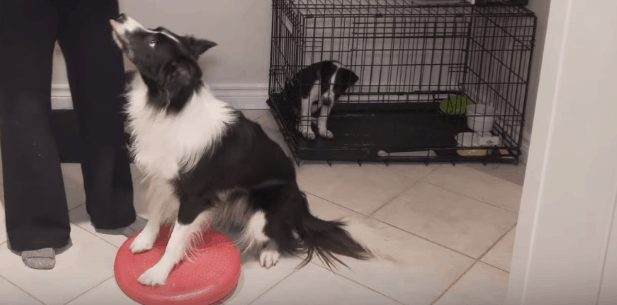
10. Introduction Should Be In Controlled Environment
A couple of things that I do to guarantee my success are:
When I have her out and working around a distraction, I have a long line on her. So if she decides to leave me at any time and go and jump on my elder dog’s head, I can stop her from doing that.
She should learn that leaving me and going to visit another dog while we’re training is something that she shouldn’t do.
I make sure that she’s really hungry when I’m going to do the introduction with other dogs. I use really high-value treats and rewards so that, there’s a greater chance of her playing under those distractions and still stay focused on me.
The most important thing is to not allow your puppy to choose another dog or something else over you. You don’t want to make it so easy for that decision to be made in the first place.
Try to control the environment so that it’s really easy for your puppy to pay attention to you. Getting attention can be really hard when you’re a baby puppy but the environment does help.
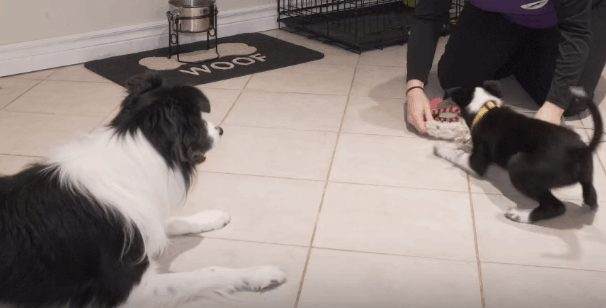
11. How To Introduce to Other Dogs Later
Eventually, I want her to be a complete part of the pack. She should be able to get along with the other dogs and still listen to me. But it’s important to do that gradually over time. The speed at which I do that is going to be completely based on how well she’s listening.
The better she listens, the stronger bond we have together and the earlier I’ll be able to let her mix up with the other dogs. The essential skills I want to teach her are:
- With every grown-up dog, how well she gets along
- How can she be a part of the pack
- How to be respectful to the other dogs
- See where she fits in
But before I do that, I need to make sure that both of us have built a really strong bond. When I want her to come to me or listen to me, I don’t want to compete against the draw and the excitement of the other dogs.
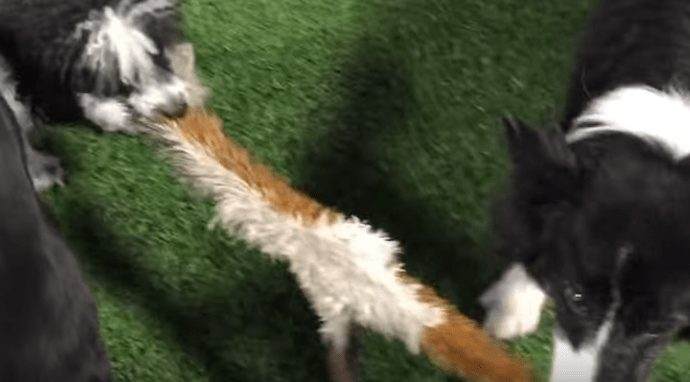
12. Let Other Dogs Be Puppy’s Teacher
There’s a lot that a puppy can learn from the elder dogs in your household. Of course, it depends if they can discipline or give information to your puppy in a fairway.
I have a great pack that has taught every single puppy that I’ve owned. When they all are together, puppies learn to be confident and easygoing with other dogs in various situations.
Things I want a puppy to learn from the grown-ups are how to be respectful and polite with the elder dogs.
Firstly, it’s important that both of us also learn what our relationship is like. Then from there on, I worry about her relationship with my other dogs. Having a puppy is basically like having a second full-time job. It’s a lot of work.
13. Save Your Energy: Make A Routine
It is tiring when you own many dogs and also have elder dogs that you’re training. If you’re spending a lot of time with your puppy and other dogs are not getting much attention, sometimes other dogs’ nose can be out of joint.
All of us have a million things to do in a day. It’s often a really good idea to schedule training sessions with the puppy in times that are already convenient for you.
So for me, in the morning, I try to do a little training session with her. When I’m giving her breakfast, I’ll use some of her breakfast for doing the training first. After the training, I’ll give her the rest of the food.
While she’s eating the rest of the breakfast, I’ll go downstairs and let out my other dogs and feed them. This way puppy’s tired, dogs are fed and dogs are out, then I can go to work. Then when I have a break later in the day, I go through the routine again.
The idea is to make sure that I am giving attention to both the puppy and the other dogs.
This wonderful app on Google play will help a lot in creating a routine for your doggo.
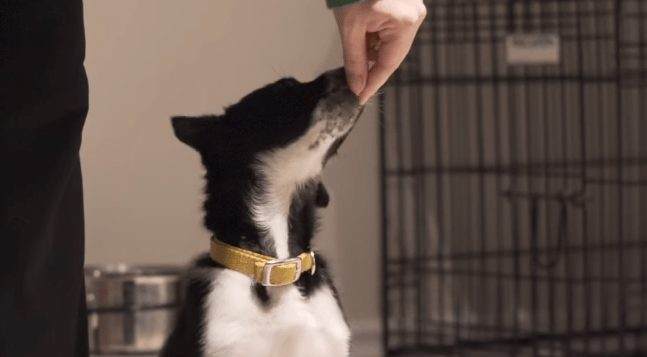
14. It is Necessary To Maintain The Perfect Balance
Obviously, the puppy’s a baby and she needs a lot of attention. She is my priority during the first two weeks of having her home. However, I try to make sure that I’m making an effort to spend time and train the other dogs.
Many days I’ll be tired at the end of the day and I don’t feel like running a giant agility course with the dogs. Then I might just take them for a walk or throw a ball or do some tricks.
Doing little activities like listed above don’t take a lot of brainpower on my part. But the dogs still feel like I’m paying attention to them. Also, they don’t feel like my attention is too divided between them and the puppy.
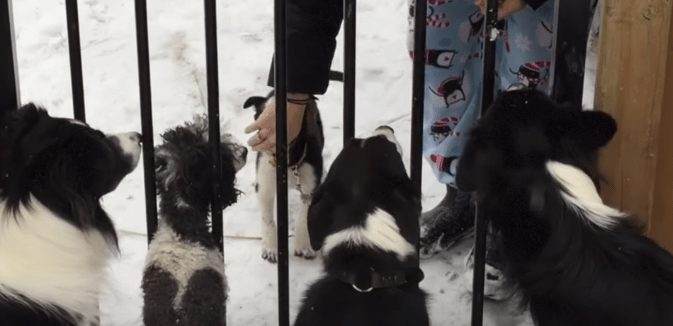
15. Worst Case Scenarios
Even with all of your effort in introducing the puppy and adult dog, and doing everything the right way, there could still be problems that arise. You should always be ready for worrisome situations.
If you notice anything unusual or other signs that your older dog is becoming more stressed or acting out of their normal behavior, consult a professional for help.
Unfortunately, there may be times when any and every action you have taken is not helping, you may need to rehome the new puppy.
While it is sad, it’s better than having both dogs live in stressful or potentially dangerous situations. Some dogs will never get along with other dogs, no matter what steps you try to take.
Do’s – What You Should Do
The steps listed here should be taken with any new puppy you plan to add to the family, even if for a short time.
- Do feed them in separate areas.
- Do let them roam free from their crates.
- Do find a neutral territory for introductions.
- Do let them play together if they want to.
- Do supervise when letting them play together.
- Do supervise for several weeks.
- Do let them interact with each other in a positive way.
- Do spend time with them separately.
- Do let them set their own pace with each other.
Don’ts – What to Avoid Doing
So now your older dogs have let you in the door with the new puppy, what’s the next step? First, you need to know what not to do in this situation, and what is off-limits for puppy and resident dogs alike?
- Do not hold the puppy while introducing them.
- Do not allow bullying of the puppy.
- Do not let them fight, ever.
- Do not force the introductions.
- Do not have them share a crate. The puppy needs his own crate as does the adult dog.
How to Introduce a Puppy to a Dominant Dog
If your adult dog shows aggressive behavior toward the new puppy, be sure to consult with a professional as the information we’ve provided here is meant as a guide, not as a substitute for behavior assessments. It’s best to keep the animals separated until the behavior problem is addressed.
Learn More With the Help of Videos
Final Thoughts on How to Get Older Dog to Accept Puppy
I encourage you to take the time to really separate your puppy from the other dogs during the initial days. Work on building a strong bond with her. One of the reasons why people struggle with dog biting, nipping and not listening is because they didn’t take a lot of time to build a relationship between them and the puppy.
I know I’m not going to have too many troubles with distractions from other dogs during the introduction process. I’m teaching her to work for me and pay attention to me, right from the moment she came home.
She thinks training with me is a ton of fun, and that’s exactly what I want her to think. So when we are around distractions and I have things to compete against, she’s going to choose me.
While we are discussing the introduction of a puppy to grown-up dogs, it is also good to know how will you introduce your dog to a newborn baby in your home. To help you out on that, I am giving extensive knowledge with tips at how to introduce dogs to new born baby.
She’s going to think that’s the better bet. It’s a lot of work to do the separation and introduction. It can be very challenging and difficult at times.
But I’ve done it with every dog I’ve owned and I have been so glad at the outcome of it. So it’s something that I would encourage you to try as well.
References
- https://link.springer.com/article/10.1007/s10071-007-0102-7
- https://www.cabdirect.org/cabdirect/abstract/19972204283
Table of Contents
